The Untamed and Decadent History of Studio 54: Inside the World of Glamour, Scandal, and Unrestrained Freedom
Many clubs—like the Cotton Club, the Moulin Rouge, and the Copacabana—are synonymous with a particular era. But none reached the heights of Studio 54, where simply stepping inside meant you weren’t just a guest—you were a star.
Studio 54 became a legend in New York City’s nightlife history, earning a reputation unlike any other. Its uninhibited energy, dazzling glamour, and wild creativity created a scene that will likely never be replicated.
For the brief 33 months it operated, Studio 54 was the ultimate American bacchanal—a striking fusion of extravagant elegance and raw decadence.
The brainchild of Steve Rubell and Ian Schrager, the club opened in late April 1977 in a former CBS soundstage and quickly became the epicenter of nightlife in New York City—and the world.
This article explores the rise of this iconic nightclub, its meteoric ascent to the pinnacle of party culture, and its eventual downfall.
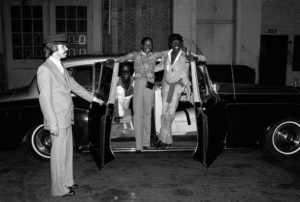
The Birth of Studio 54
Originally opened as an opera theater in 1927, Studio 54 evolved into a legendary nightclub in 1977. Before its transformation, the venue served as a CBS radio and television studio, still filled with TV sets and lighting equipment when Steve Rubell and Ian Schrager took over.
Rubell and Schrager first met as college roommates at Syracuse University. After an unsuccessful attempt at running a steakhouse chain, they shifted their focus to the nightclub business.
Determined to make their mark on New York City’s nightlife, they acquired Studio 54 from its previous owners—setting the stage for what would become the most iconic club of all time.
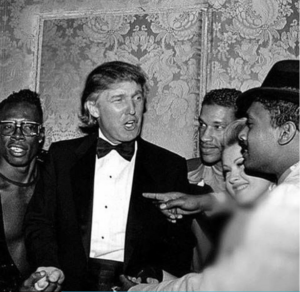
Studio 54’s renovation cost around $400,000 and took six weeks, continuing up to opening night. The club initially lacked a residency and liquor license, a fact revealed later.
Despite this, its prime location on West 54th Street and immersive atmosphere made it an instant sensation. Thanks to Rubell’s connections, celebrities flocked to the club, solidifying its elite status.
Musically, Studio 54 didn’t reinvent the wheel but delivered the era’s biggest dance hits, with disco as its defining sound.
Live acts included Grace Jones, Donna Summer, and Gloria Gaynor, but the true stars were the DJs and the club’s vibrant crowd.
As disco dominated the charts, Studio 54 reigned supreme from its grand opening in April 1977 to its legendary farewell party on February 4, 1980—dubbed “The End of Modern-day Gomorrah.”
The Hedonistic Riot of Opening Night
Beverly Hills entrepreneur Nikki Haskell was the first to arrive at Studio 54’s grand opening on April 26, 1977—an event later dubbed “the most mythologized opening party ever.”
She knocked on the door alongside a then-unknown Donald Trump and his new wife, Ivana. However, they had to wait about 15 minutes before entering, as last-minute renovations were still underway.
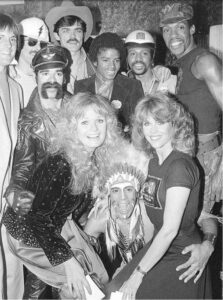
As the minutes passed, the crowd steadily grew. Yet, when DJ Richie Kaczor dropped the first record of the night—“Devil’s Gun” by C.J. and Company—only about 50 to 60 people were inside.
For the first hour, little changed. But by 11 PM, the trickle of guests became a flood, with thousands swarming the building.
Traffic on 54th Street came to a halt as celebrities and partygoers alike fought to get in. Frank Sinatra was stuck in his limousine, unable to move closer.
Cher, Margaux Hemingway, and a teenage Brooke Shields managed to make it inside, while Warren Beatty, Kate Jackson, and Henry Winkler weren’t as lucky.
With nowhere else to go, the party spilled onto the street. Years later, one clubgoer recalled waiting outside with friends, including a doctor carrying a jumbo bottle of Quaaludes.
“The doctor started handing them out,” he told Haden-Guest. “About 30 people took them, and suddenly, it turned into a wild orgy. Men had their d**ks out, women were flashing … everyone was touching everyone … the crowd moved in waves … and before you knew it, you were next to a stranger.”

The frenzy of indulgence at Studio 54 wasn’t confined to its four walls. Outside on the balcony, in the basement, and throughout the venue, people reveled in excess.
The club’s legendary opening night laid the groundwork for its status as an era-defining icon.
“All of us knew that night we weren’t just at the opening of a discotheque but witnessing history—something that would change how people lived and partied … There were no rules. Sodom and Gomorrah met the High Street that night.”
While working for CNN, Robin Leach escorted 11-year-old sensation Brooke Shields to Studio 54’s grand debut.
Exclusive Entry
Even on public nights, getting into Studio 54 was a symbol of status. When the club first opened, admission cost around $7 or $8, though annual memberships offered a more affordable way in.
However, the doormen were highly selective—even members were sometimes turned away. Yet, with a bit of luck, even those without elite connections could find their way inside.
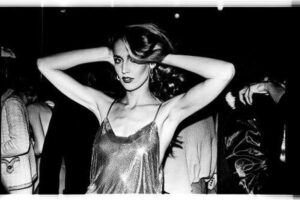
The entry requirements were unclear—only those with the right look and style made it inside. As a result, many were turned away at the door, while countless others waited in line, hoping to be deemed worthy.
Due to the club’s strict entry policies, some guests resorted to desperate measures to get in—often with disastrous results. One man, as reported by Haden-Guest and later confirmed by Schrager, got stuck in a ventilation shaft and died.
Rejected guests sometimes lashed out at doormen, with a few even pulling weapons. The risk of violence grew so high that security regularly cleared out trash cans within several blocks as a precaution.
Even high-profile figures were denied entry. The president of Cyprus was turned away after being mistaken for the president of New York City’s Cypress Hills Cemetery. When one of Saudi King Khalid’s sons was refused, the Saudi embassy in Washington later sent a letter to Rubell, asking that he not be rejected again.
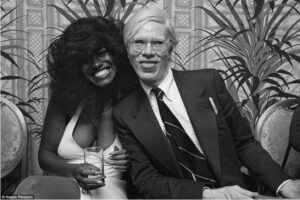
After being denied entry on New Year’s Eve 1977—despite an invitation from Grace Jones—the band Chic channeled their frustration into creating the hit song “Le Freak” in 1978.
The club’s door policy played on a fundamental human desire: wanting what we can’t have. Rejected guests often returned multiple times in a single night, changing their outfits, hairstyles, and companions in hopes of gaining entry. Many believe Studio 54’s extreme exclusivity was a key factor in its unprecedented success.
Inside the Club
Studio 54 emerged during the peak of the disco era, quickly becoming the epicenter of nightlife. Its fame soared within days, fueled by an iconic photograph of Bianca Jagger on a white horse (though not actually taken at the club).
Despite being open only from Tuesday to Saturday, Studio 54 welcomed an average of 2,000 guests per night within its first month, solidifying its legendary status almost instantly.

Each night at Studio 54 was a vibrant mix of people from all walks of life, not just from New York but from around the globe. The club attracted a diverse crowd, including punks, hairdressers, socialites, and suburbanites. Despite its star-studded reputation, Rubell noted that most guests weren’t celebrities but ordinary people simply looking to dance.
Strange Substances
Nightlife in the 1970s inevitably involved drugs, but Studio 54 took it to another level. Partygoers openly indulged, with cocaine and other substances circulating freely. Given the club’s elite clientele, high-end narcotics were always in abundance.
A Tolerant Environment
Studio 54 was ahead of its time, offering an unparalleled sense of freedom. There were no strict dress codes or societal norms—whether you wore extravagant outfits, little to no clothing, or bold makeup, you were embraced. Drag queens and all forms of self-expression were not just accepted but celebrated.
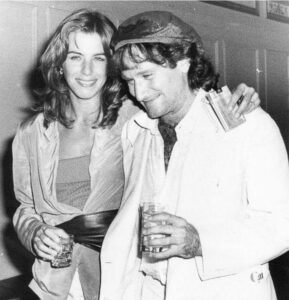
Studio 54 was infamous for its anything-goes atmosphere, with open sexual encounters happening on the club’s balcony and in underground rooms. Those craving the wildest experiences found their way to private spaces like the underground sex cubicles or “the rubber room” on the balcony. At Studio 54, nothing was off-limits.
The women were described by The Journal as “beneficiaries of a spectacularly fortuitous genetic selection,” while the men exuded an “aura of self-esteem born in the awareness that one can successfully choose among the select.”
Crowds Like No Other
Studio 54 attracted some of the biggest names in entertainment, from Michael Jackson and Dolly Parton to Sylvester Stallone, Stevie Wonder, and Elton John. Even royalty graced its dance floor on occasion.
Until its final days, even Princess Diana was among Studio 54’s regulars. The club wasn’t just for actors and musicians—political figures occasionally joined the wild scene as well.
Parties Like No Other
Beyond the nightly debauchery, Studio 54’s extravagant themed parties were legendary. Rubell, Schrager, and their team turned VIP fantasies into reality, spending tens of thousands on single-night spectacles that vanished by the next evening.
Karl Lagerfeld once hosted an 18th-century candlelit ball with staff in powdered wigs. For Elizabeth Taylor’s birthday, The Rockettes performed while she lounged on a gardenia float, later receiving a life-size cake replica of herself.

One of the most memorable events at Studio 54 was a New Year’s Eve celebration orchestrated by event planner Robert Isabell. Four tons of glitter were scattered across the floor, forming a four-inch-thick layer that lingered on attendees’ clothing and in their homes for months. If you visited a friend and spotted glitter around, chances were they had been there.
Studio 54 also hosted fundraising events for local politicians and a Halloween party organized by People magazine. Additionally, the club served as a filming location for music videos from Musique’s album Keep On Jumpin’.
The End of Modern-Day Gomorrah
On December 14, 1978, IRS agents raided Studio 54, confiscating five ounces of cocaine, financial records, and garbage bags full of cash. This occurred shortly after Steve Rubell publicly boasted that “only the Mafia does better” in terms of revenue than Studio 54.
Rubell and Schrager were arrested and charged with embezzling $2.5 million from the club’s earnings. In November, they pleaded guilty to two counts of corporate and personal income tax evasion.
Judge Richard Owen handed down the maximum sentence—three and a half years in prison and a $20,000 fine—stunning the courtroom.
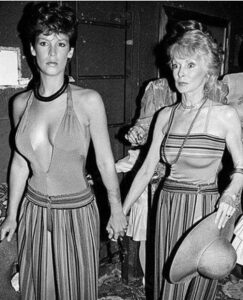
In the following February, just before Rubell and Schrager were to be sentenced, they threw one last farewell party, dubbed “The End of Modern-Day Gomorrah.” This final event was more intimate than usual, with only 2,000 of Studio 54’s loyal patrons in attendance, including Richard Gere, Halston, Reggie Jackson, Andy Warhol, Lorna Luft, and Sylvester Stallone.
Diana Ross serenaded the crowd from the DJ booth, and Liza Minnelli performed “New York, New York.” Rubell, donning a Sinatra-esque fedora, joined in with a heartfelt rendition of “My Way,” a song that echoed throughout the night alongside Gloria Gaynor’s iconic “I Will Survive.”
Rubell addressed the crowd from a mechanical platform above the dance floor, delivering a heartfelt message. “Steve was too high to function,” recalled one participant. “He was saying, ‘I love you people,’ as Bianca hugged him. Without Studio, ‘I don’t know what I’m going to do!’ Everyone was in tears.”
Although Studio 54’s reign was brief, its impact was immeasurable. Steve Rubell, who made the club legendary, only ran it from 1977 to 1980. The years following its closure were never quite the same, as no other club could match the fame, luxury, and influence that Studio 54 had. Its memories remain alive in the hearts of those who experienced it, and in the stories that continue to circulate about the iconic era.
